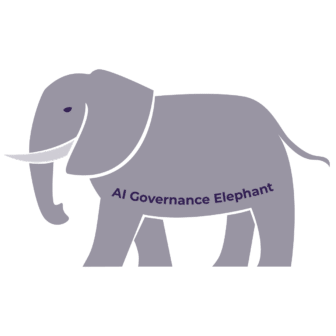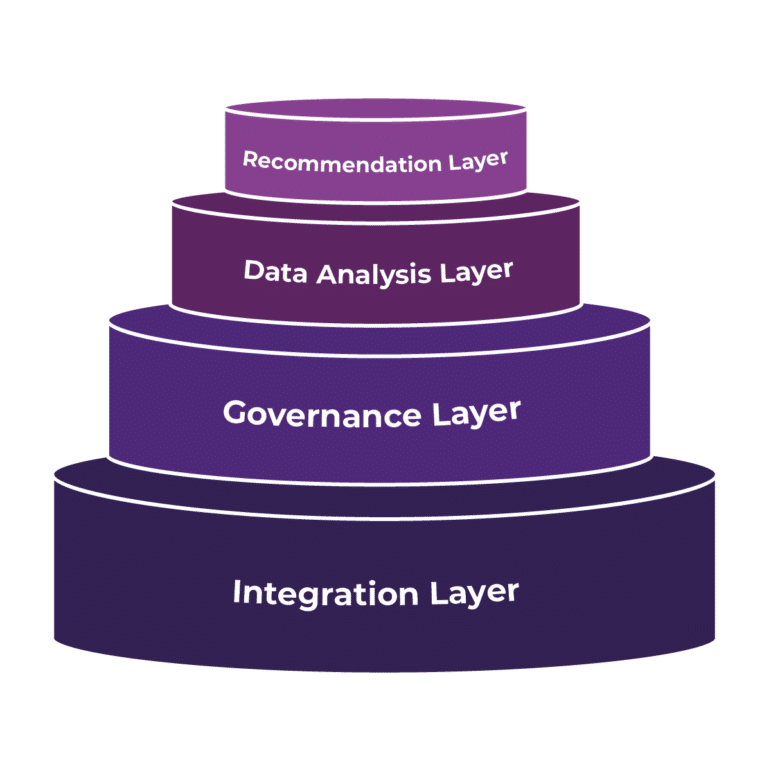As part of our larger webinar series designed to explore the Semantic Layer’s pivotal role in modern data management and artificial intelligence, on Monday, April 22, Enterprise Knowledge hosted a webinar titled “Industry Panel: Different Applications of a Semantic Layer.” This is the first of several sessions where EK conducts conversations about the Semantic Layer with pioneers in the information and data management domains. Our intention is to follow each of these webinars with a blog that details the overarching themes, key findings and takeaways, and memorable quotes from the session, with the hope that these experts’ stories and insights will help others in their journey to true knowledge connectivity.
This first session was moderated by Lulit Tesfaye, EK’s very own Partner and Vice President of Knowledge & Data Services, whose primary focus is on employing practical AI and semantic capabilities for optimizing organizational knowledge, data, and information assets. Our three panelists were Polly Alexander, Director of Metadata and Taxonomy for WebMD Ignite, with expertise bridging the fields of Knowledge Management, AI, and Machine Learning; Malcolm Hawker, a former Chief Product Officer and Gartner analyst with over 25 years of experience across the fields of Data Strategy, Master Data Management (MDM), and Data Governance; and Mohammed Aaser, Chief Data Officer (CDO) of Domo and former CDO of McKinsey and Company.
Webinar Summary—What Is a Semantic Layer?
To set some context for this blog (which the truth is bound by, as you’ll read in a few minutes), a Semantic Layer is a standardized framework; it’s not one technology and it’s not an all-powerful product that you can click and buy. Rather, a true Semantic Layer is a combination of solutions that help organize and connect your organization’s knowledge and information, both structured and unstructured. It does so by shifting the focus from only physical data to descriptive metadata, allowing an organization to aggregate content from multiple sources without the overwhelming step of migrating all your data to one central location. As another powerful benefit, a Semantic Layer allows you to provide structured context to any type of data by leveraging schemas like taxonomies, ontologies, and knowledge graphs, ultimately enabling flexibility and interoperability between systems – the end goal on many organizations’ roadmaps.
The panelists discussed various topics revolving around the real-world applications of the Semantic Layer within their respective industries and organizations. In this article, we present the 6 primary themes that our experts discussed, showcasing the common value that Semantic Layers bring, no matter the experience or industry.
Overarching Themes / Key Findings & Takeaways
Enabling Truth to Be Bound by Context
The Semantic Layer bridges the gap between data management and true knowledge management by adding and connecting information with context.
“We’ve always known that truth is bound by context.” – Malcom Hawker
What is true to a CEO may look completely different from what is true to a new business analyst, though both versions of that truth may, and usually are, present and valid within an organization. The goal of knowledge management is to allow the right kind of truth to be delivered to the right person at the right time they need it. Semantic Layers enable multiple versions of true information to exist at the same time, building context around who will need that information and in what form. For example, that CEO and that new business analyst may need different types and formats of information from the same data set; the CEO requires a high-level summary to make a strategic decision, while the analyst requires a more granular view to write a longer, more detailed report.
Many relationships, both within an organization and to the audiences they serve, depend on the trust that comes when people are delivered correct, meaningful information that helps them make an informed decision. These relationships range from medical professionals and the patients they advise, to product-based companies and the customers they advertise to, to business executives and the staff that they employ. The trust that comes with context is invaluable, as don’t we all just want to feel understood?
Understanding Specific Domains & Defined Business Entities
Another major benefit of the Semantic Layer is that it allows an organization’s technology solutions to truly represent the organization’s domain and specific business lines. In some cases, this can literally mean life or death when it comes to predicting the type of knowledge that people will need next. Polly provided some great anecdotes from a healthcare perspective, aptly noting that, with the rise of LLMs, people have come to expect immediate and easily accessible answers to their questions. As patients are seeking quick and personalized information about their medical journey, symptoms, treatment plans, etc., it’s imperative that content recommendations be reliable and generated from accurate and governed data. The power of a knowledge graph, and in turn, the Semantic Layer, is the idea of targeted recommendations that indirectly advises and supports users on what the best action is, relevant to the domain they’re in and the concepts they’re researching. It’s really exciting that decades of research and information can be operationalized in a new way to deliver end users with information before they knew they needed it, but it must be verifiable and based in truth, in case you don’t have the luxury of getting it wrong.
Approaching Technical Possibilities from the Layman’s Perspective
While the excitement around semantic technologies is palpable (at least in our field), it can be difficult to garner the right level of buy-in and understanding from business stakeholders and end users, as the Semantic Layer involves some highly technical concepts. The panelists recognized this challenge and discussed different ways to start these conversations and make the Semantic Layer more real. They discussed comparing the Semantic Layer to a digital twin (say, a virtual model of a jet plane before it is even built) or connective tissue (that super important stuff inside humans that provides cohesion and internal support).
“A Semantic Layer is much like connective tissue.” – Polly Alexander
While the Semantic Layer can be daunting to bring to the discussion table, leveraging familiar metaphors and technologies can help make this highly technical concept much more palatable for business buy-in. The rise of LLMs and other forms of GenAI makes now the perfect time to start these conversations, as most people are familiar with those concepts. The message is simple: people want fast answers to their questions, and they want to be confident those answers are correct. But, without the right underpinning, you risk exposing the wrong information and data. Most companies will not be building and training their own LLMs, but they will be utilizing intelligent agents already available in the everyday applications they use, such as chatbots and Copilot, chasing the promise of hyperproductivity.
Within any industry, there are well-known and defined facts, providing a great starting point for content that can be ingested, modeled, and delivered. It’s not necessary for an organization to leverage an LLM to look through other types of data or an entire corpus of information, as we know from our research that 70-80% of any organization’s data is incorrect, outdated, or duplicate. The compelling driver for the Semantic Layer is to provide LLMs with facts and entities that are already true and defined within a particular domain, rather than letting them come to their own conclusions. The real power of a LLM, or any customized semantic solution, is that it has the ability to make structured information humanized and understandable, a goal that will resonate with most stakeholders, no matter their background or expertise.
Navigating the Balance Between Exciting Technologies and Real-World Use Cases
Any conversations around these exciting technologies should be balanced with discussions of well-defined, real-world use cases. A use case, or a user’s story to tell, will resonate with any audience. The panelists discussed two schools of thought here: you can either focus heavily on the user story and avoid any technical concepts in initial conversations, or you can focus on the specific business value to paint a larger picture (the timing, what your organization wants to go after, and the rationale behind investing in semantic technologies). Both approaches are valid but should be considered for the particular audience.
It’s also important to conduct the aforementioned conversations with a skeptical mind. The Semantic Layer holds immense potential, but it’s not right for every organization. For organizations with data products that involve multiple complex data sources to be integrated, a Semantic Layer is invaluable and will warrant the investment costs. But for smaller organizations, the Semantic Layer may simply be a consideration to learn more about for future growth and scale. This skepticism can save a lot of time and money, setting expectations early that the right approach to a Semantic Layer is starting small, building on 1-2 integrations and a common data model, and staying grounded in a prioritized use case to more easily prove out and measure value.
Making Data Teams Clickable
A major challenge within many organizations is the fact that data and analytics teams are often siloed or disconnected from the rest of the business, and furthermore, data professionals may only make up 1-2% of a workforce. They hold the data and technical knowledge, but do they really understand the business and possess the ability to advise the rest of the organization? The panelists explored the idea that in order for an organization to make the jump from data to knowledge, in order for it to start addressing the prioritized use cases I mentioned above, it’s imperative that data teams truly understand the use case they are looking to solve and are viewed as strategic business consultants that can guide the organization on their Semantic Layer goals.
“I think data and analytics teams need to move closer to the business and become strategic business consultants. The way we do that is through this focus on knowledge.” – Malcom Hawker
Malcolm and Mohammed joked that it may be as simple as a name change that leads to a mindset shift: instead of Chief Data Officers, perhaps they should rebrand themselves to Chief Knowledge Officers or Chief Wisdom Officers, positioning themselves as thought leaders and partners by focusing on the types of knowledge that will bring the most value.
should rebrand themselves to Chief Knowledge Officers or Chief Wisdom Officers, positioning themselves as thought leaders and partners by focusing on the types of knowledge that will bring the most value.
“We could rebrand ourselves as Chief Wisdom Officers.” – Mohammed Aaser
By making data teams ‘clickable’, that is, building a team who is attractive as a source of technical expertise as well as valuable business insights, it’s much easier to have fruitful conversations about how to leverage semantic technologies and when to do so. The Semantic Layer path can be fraught with peril, and it requires collaboration and mutual understanding to start down that path.
Baking the Four-Layer Cake
I give full credit to Malcolm for this analogy, but I think it’s helpful to end off this blog with a bigger, more digestible picture. He describes the Semantic Layer as a four-layer cake, composed of an Integration Layer, a Governance Layer, a Data Analysis Layer, and topped with a Recommendation Layer.
“I see this as a 4 layer cake.” – Malcom Hawker
The Integration Layer provides the foundation, the data pipelines and APIs that help connect disparate sources. The Governance Layer encompasses the guidelines and processes that help maintain and refine knowledge and data over time. The Data Analysis Layer includes developing, running, and tuning models to make sure that accurate conclusions are drawn from the data. Finally, the Recommendation Layer helps users understand how different pieces of information are connected by recommending them related content based on their personal attributes, location, demographic profile, search history, etc.
Many organizations we’ve worked with have already taken the first step of building the base, the Integration Layer. It’s important to have that foundation and stack the additional layers on top, with proper time and consideration given to each. I’d like to call particular attention to the Governance Layer, as we’ve seen too many organizations overlook the “AI Governance Elephant in the Room”— look out for Malcolm’s upcoming article with this title—meaning that the same careful attention that is paid to structured data assets is not applied to the rest of an organization’s content, such as FAQs that marketing creates, bereavement policies, or employee handbooks.
look out for Malcolm’s upcoming article with this title—meaning that the same careful attention that is paid to structured data assets is not applied to the rest of an organization’s content, such as FAQs that marketing creates, bereavement policies, or employee handbooks.
“The AI Governance Elephant in the Room” – Malcom Hawker
A properly baked Semantic Layer provides consideration and guardrails to this type of content, especially for organizations that are already using some form of GenAI, protecting users from receiving imprecise, outdated, or downright wrong information. In most cases, the allure of semantic technologies is rooted in text data; the Semantic Layer is the bridge that transforms structured data that is sitting in rows and columns into text data that can be easily read and understood. The combination of LLMs and the Semantic Layer is truly revolutionary, and it’s reigniting this field and conversations just like this webinar. I think Lulit said it best during the webinar:
“If you are able to understand and map your data and encode the facts, then you can ask the questions of tomorrow.” – Lulit Tesfaye
Closing
By reshaping the way that we think about and interact with our knowledge and data, and by considering the individual roles within an organization that can benefit from this connectivity, the possibilities are truly endless. If you found this blog interesting or insightful, I encourage you to go listen to the recording of the full webinar or check out the rest of our Knowledge Base for many more resources on the Semantic Layer. If you are looking for help getting started on harnessing the power of Semantic Layers or discussing the value that these solutions can bring, contact us today!

